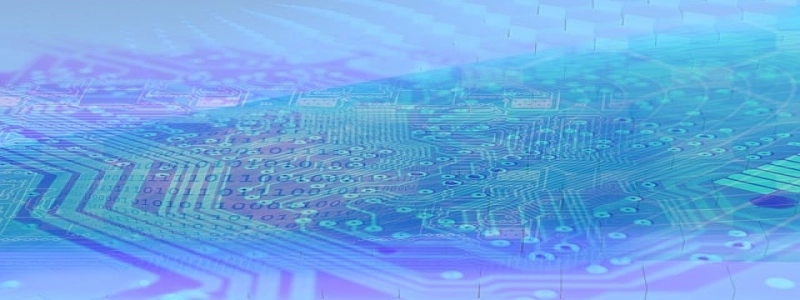POE Ethernet Hub: Simplifying Power and Data Transmissions
Introduction
I. The Basics of a POE Ethernet Hub
A. Definition and Purpose of a POE Ethernet Hub
B. Understanding Power over Ethernet (POE) Technology
1. Transmitting Power and Data over a Single Ethernet Cable
2. The Benefits of POE Technology
II. Features of a POE Ethernet Hub
A. Multiple Ports for Network Connectivity
B. Power Sourcing Equipment (PSE) Functionality
1. Compatibility with POE Devices
2. Power Management and Control
C. Data Transfer Speed and Efficiency
III. Installation and Setup Process
A. Locating an Ideal Network Placement
B. Connecting Devices to the POE Ethernet Hub
1. Ethernet Cabling and Connectivity Requirements
2. Powering On the POE Ethernet Hub
C. Configuring Settings and Network Permissions
1. Setting Up Network Security
2. Assigning IP addresses to Connected Devices
IV. Applications and Benefits of a POE Ethernet Hub
A. Simplified Network Infrastructure
B. Cost and Energy Savings
C. Flexibility and Scalability
1. Support for Remote and Outdoor Installations
2. Adding and Managing Devices on the Network
Conclusion
– The POE Ethernet Hub: A Powerful Solution for Power and Data Transmission
Introduction:
In today’s digital world, the need for reliable and efficient network connectivity has never been more crucial. With the increasing demand for both power and data transmissions, traditional Ethernet hubs are being replaced by a more innovative and convenient solution – the POE Ethernet Hub. In this article, we will delve into the various aspects of a POE Ethernet Hub and explore its features, installation process, and applications.
I. The Basics of a POE Ethernet Hub:
A. Definition and Purpose of a POE Ethernet Hub:
A POE Ethernet Hub is a networking device that allows for the transmission of both power and data signals over a single Ethernet cable. Its primary purpose is to simplify network infrastructure by eliminating the need for separate power cables for various devices, such as IP cameras, wireless access points, and VoIP phones.
B. Understanding Power over Ethernet (POE) Technology:
1. Transmitting Power and Data over a Single Ethernet Cable:
POE technology enables the delivery of electrical power alongside data signals over standard Ethernet cables. This eliminates the need for additional power cords, providing a streamlined and clutter-free setup.
2. The Benefits of POE Technology:
POE technology offers several advantages, including cost savings, simplified installation, and improved flexibility. With a POE Ethernet Hub, administrators can easily deploy and manage devices throughout their network without the limitations imposed by traditional power sources.
II. Features of a POE Ethernet Hub:
A. Multiple Ports for Network Connectivity:
A POE Ethernet Hub typically features multiple ports, allowing for numerous devices to be connected simultaneously, while ensuring uninterrupted data and power transmission.
B. Power Sourcing Equipment (PSE) Functionality:
1. Compatibility with POE Devices:
A POE Ethernet Hub acts as a Power Sourcing Equipment (PSE), supplying power to compatible POE-enabled devices. This ensures that devices receive the required power to function optimally.
2. Power Management and Control:
A POE Ethernet Hub allows for power management and control, enabling administrators to monitor and adjust power settings for connected devices. This helps optimize power usage and prevent overloads or shortages.
C. Data Transfer Speed and Efficiency:
In addition to supporting power transmission, a POE Ethernet Hub ensures high-speed data transfers and reliable network connectivity. It helps maintain efficient communication between devices, even across large distances.
III. Installation and Setup Process:
A. Locating an Ideal Network Placement:
When installing a POE Ethernet Hub, it’s essential to choose a central location that provides optimal coverage and connectivity for all devices on the network.
B. Connecting Devices to the POE Ethernet Hub:
1. Ethernet Cabling and Connectivity Requirements:
Devices can be connected to the POE Ethernet Hub using standard Ethernet cables. It is essential to ensure that the cable length and quality meet the requirements for reliable data and power transmission.
2. Powering On the POE Ethernet Hub:
Once devices are connected, power can be supplied to the POE Ethernet Hub using a standard AC power source. The hub then distributes power to the connected devices through the Ethernet cables.
C. Configuring Settings and Network Permissions:
1. Setting Up Network Security:
To ensure a secure network, administrators should configure appropriate security settings on the POE Ethernet Hub. This may include implementing password protection, enabling firewall features, and setting up access controls.
2. Assigning IP addresses to Connected Devices:
To enable communication between devices, each connected device must be assigned a unique IP address. This can be done manually or through DHCP (Dynamic Host Configuration Protocol) settings on the POE Ethernet Hub.
IV. Applications and Benefits of a POE Ethernet Hub:
A. Simplified Network Infrastructure:
By eliminating the need for separate power cables, a POE Ethernet Hub simplifies network infrastructure, reducing clutter and cable management needs.
B. Cost and Energy Savings:
POE technology reduces installation and maintenance costs by eliminating the need for additional electrical outlets and specialized power supplies. Additionally, it optimizes power usage, resulting in energy savings.
C. Flexibility and Scalability:
1. Support for Remote and Outdoor Installations:
POE technology allows for the installation of devices in remote or outdoor locations where power sources may be limited or challenging to access. This expands the possibilities for network expansion.
2. Adding and Managing Devices on the Network:
A POE Ethernet Hub offers flexibility when adding or rearranging devices on the network. Devices can be easily integrated or moved without the restrictions imposed by traditional power sources.
Conclusion:
In today’s digital landscape, the demand for simplified network infrastructure and efficient power and data transmissions has become paramount. A POE Ethernet Hub addresses these needs by combining power and data over a single Ethernet cable, eliminating clutter and providing cost and energy savings. With its multiple ports, power sourcing equipment functionality, and reliable data transfer capabilities, a POE Ethernet Hub is a powerful and essential component in any modern network setup.








